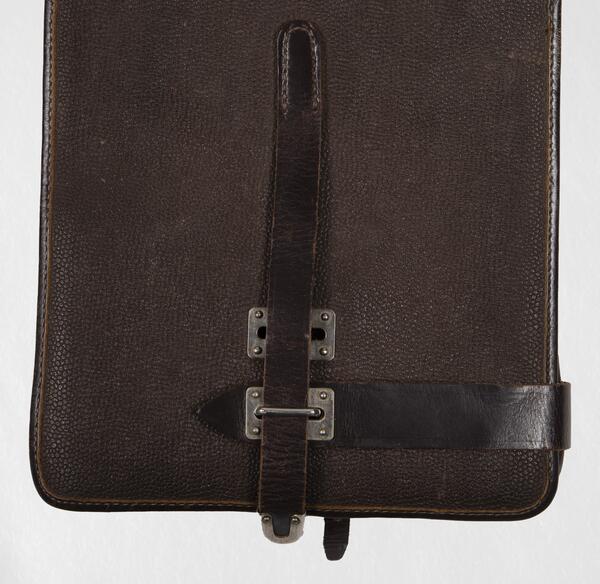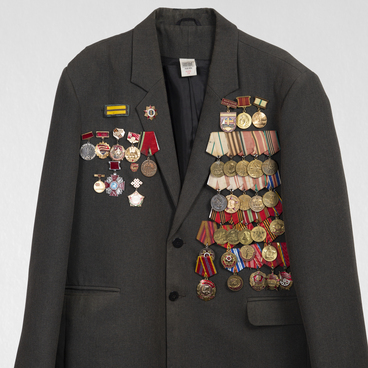The Zimovniki Local History Museum exhibits a compact field bag. Documents, maps, pens, pencils, tape measures, compasses, and small tools were stored in it. During wartime, such a bag protected important papers from moisture, dirt and dust.
The leather bag was most often called a commander’s or officer’s bag, as it was only for the senior command staff. Sergeants and warrant officers could receive it only since 1943. They were made of “kirza” — dense layered material, often used in the manufacture of boots. These bags were simpler in cut than those of the officers. Similar field bags were also part of the outfit of officers in other countries.
The first field bag appeared in the 17th century with hussars. It was colloquially called “tashka”, from the German word “Tache” meaning “bag”. In the Russian army, the bag was used in the early 20th century, during the Russo-Japanese war. The bags were decorated with the symbol of the state — the two-headed eagle. Since 1912, the bags officially became a part of the outfit among the officers of the Russian Imperial Army.
Field bags differed in their internal design: some of the items had holders for papers and maps, compartments for writing utensils, for example, pencils, pens and eraser, as well as a pocket for a compass. Other bags had only one card pocket. Pilots who did not need stationery in the air mainly used simplified bags. Therefore, such small items were called “polyotki” (from Russian “polyot” meaning “flight”).
In the Red Army, a field bag could be carried only in wartime and only by combat unit officers — these rules were established by the order of the Ministry of Defense of the USSR No. 005 of February 1, 1941. If a patrol met a civilian with such a bag, the person could get into trouble — he had to explain where the owner of the bag was and why he was carrying it. After the Great Patriotic War, field bags were often used outside the military. For example, children took them to school instead of school bags.
The leather bag was most often called a commander’s or officer’s bag, as it was only for the senior command staff. Sergeants and warrant officers could receive it only since 1943. They were made of “kirza” — dense layered material, often used in the manufacture of boots. These bags were simpler in cut than those of the officers. Similar field bags were also part of the outfit of officers in other countries.
The first field bag appeared in the 17th century with hussars. It was colloquially called “tashka”, from the German word “Tache” meaning “bag”. In the Russian army, the bag was used in the early 20th century, during the Russo-Japanese war. The bags were decorated with the symbol of the state — the two-headed eagle. Since 1912, the bags officially became a part of the outfit among the officers of the Russian Imperial Army.
Field bags differed in their internal design: some of the items had holders for papers and maps, compartments for writing utensils, for example, pencils, pens and eraser, as well as a pocket for a compass. Other bags had only one card pocket. Pilots who did not need stationery in the air mainly used simplified bags. Therefore, such small items were called “polyotki” (from Russian “polyot” meaning “flight”).
In the Red Army, a field bag could be carried only in wartime and only by combat unit officers — these rules were established by the order of the Ministry of Defense of the USSR No. 005 of February 1, 1941. If a patrol met a civilian with such a bag, the person could get into trouble — he had to explain where the owner of the bag was and why he was carrying it. After the Great Patriotic War, field bags were often used outside the military. For example, children took them to school instead of school bags.



